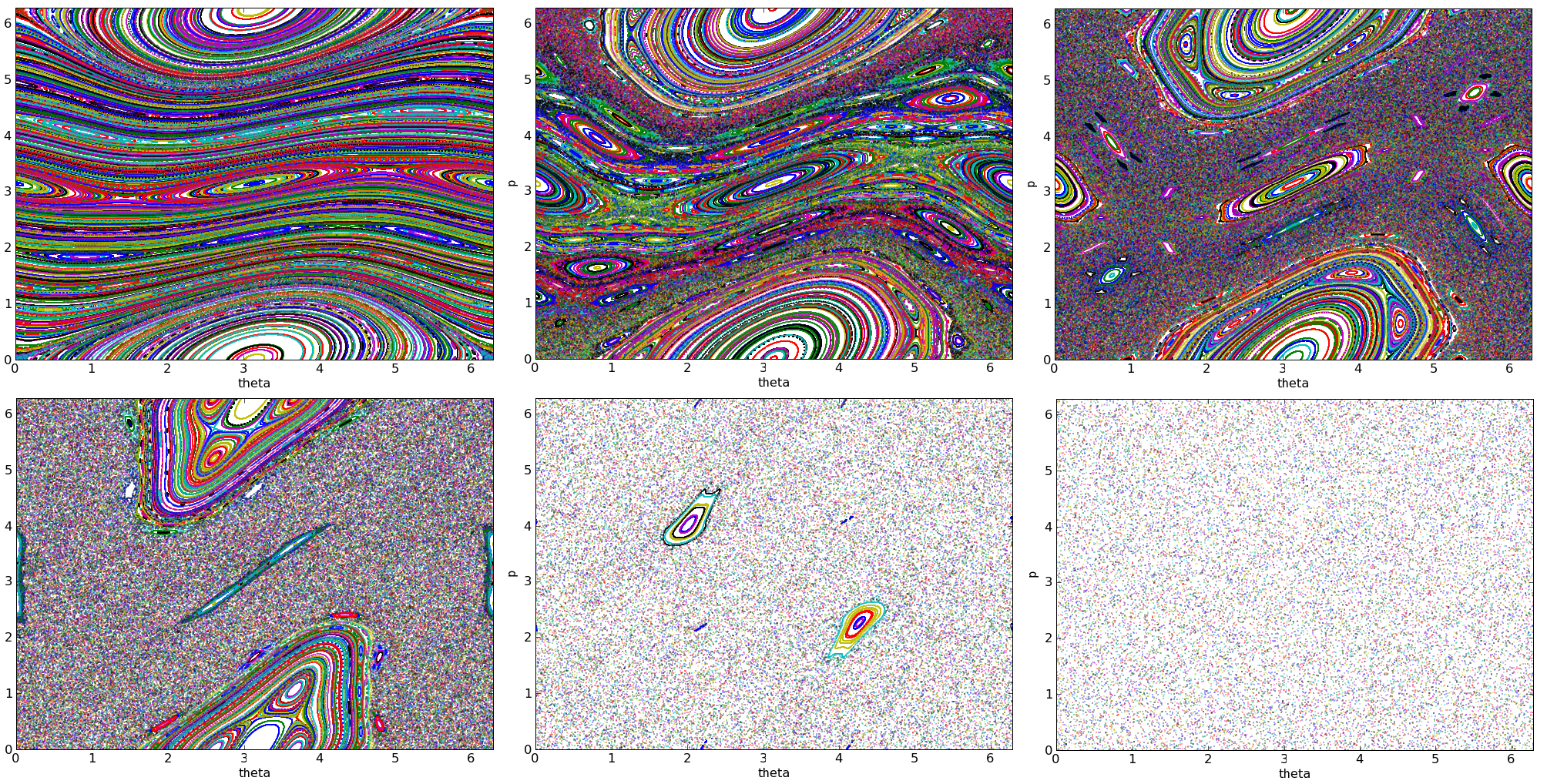
The kicked rotator, also spelled as kicked rotor, is a paradigmatic model for both Hamiltonian
chaos
Chaos or CHAOS may refer to:
Science, technology, and astronomy
* '' Chaos: Making a New Science'', a 1987 book by James Gleick
* Chaos (company), a Bulgarian rendering and simulation software company
* ''Chaos'' (genus), a genus of amoebae
* ...
(the study of chaos in
Hamiltonian system
A Hamiltonian system is a dynamical system governed by Hamilton's equations. In physics, this dynamical system describes the evolution of a physical system such as a planetary system or an electron in an electromagnetic field. These systems can ...
s) and
quantum chaos
Quantum chaos is a branch of physics focused on how chaotic classical dynamical systems can be described in terms of quantum theory. The primary question that quantum chaos seeks to answer is: "What is the relationship between quantum mechanics ...
. It describes a free rotating stick (with
moment of inertia
The moment of inertia, otherwise known as the mass moment of inertia, angular/rotational mass, second moment of mass, or most accurately, rotational inertia, of a rigid body is defined relatively to a rotational axis. It is the ratio between ...
) in an inhomogeneous "gravitation like" field that is periodically switched on in short pulses. The model is described by the
Hamiltonian
Hamiltonian may refer to:
* Hamiltonian mechanics, a function that represents the total energy of a system
* Hamiltonian (quantum mechanics), an operator corresponding to the total energy of that system
** Dyall Hamiltonian, a modified Hamiltonian ...
:
,
where
 The kicked rotator, also spelled as kicked rotor, is a paradigmatic model for both Hamiltonian
The kicked rotator, also spelled as kicked rotor, is a paradigmatic model for both Hamiltonian
 The kicked rotator, also spelled as kicked rotor, is a paradigmatic model for both Hamiltonian
The kicked rotator, also spelled as kicked rotor, is a paradigmatic model for both Hamiltonian